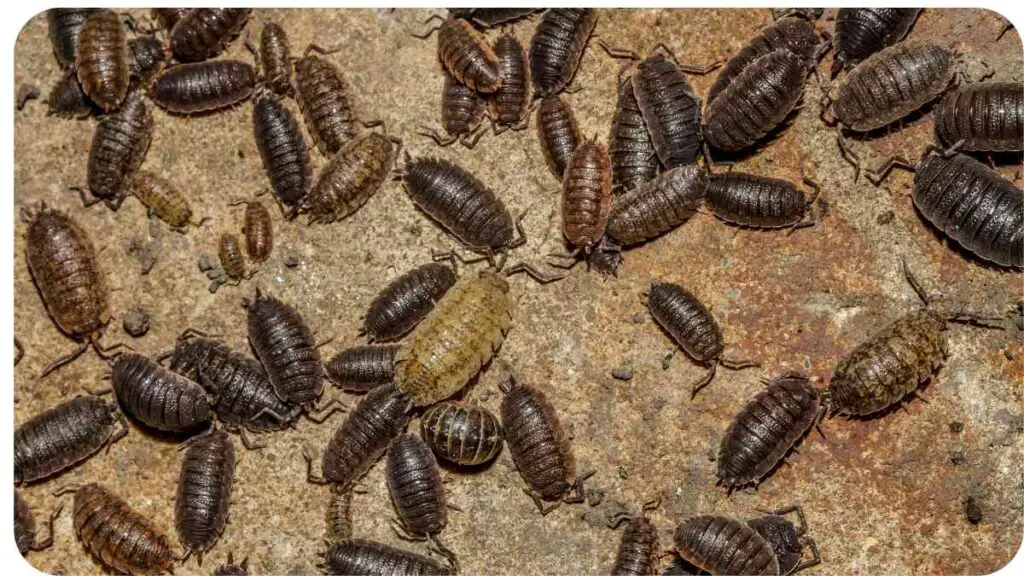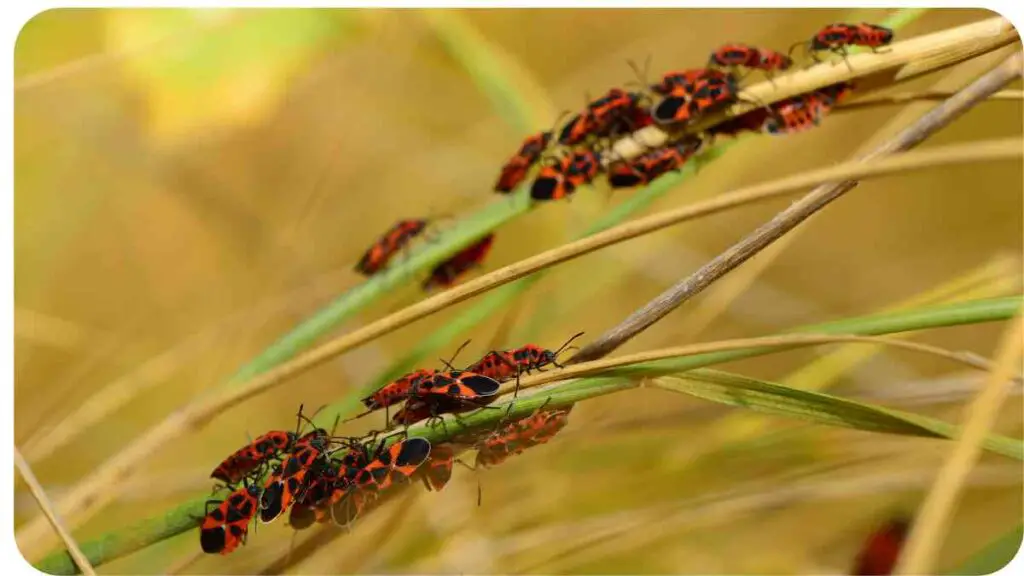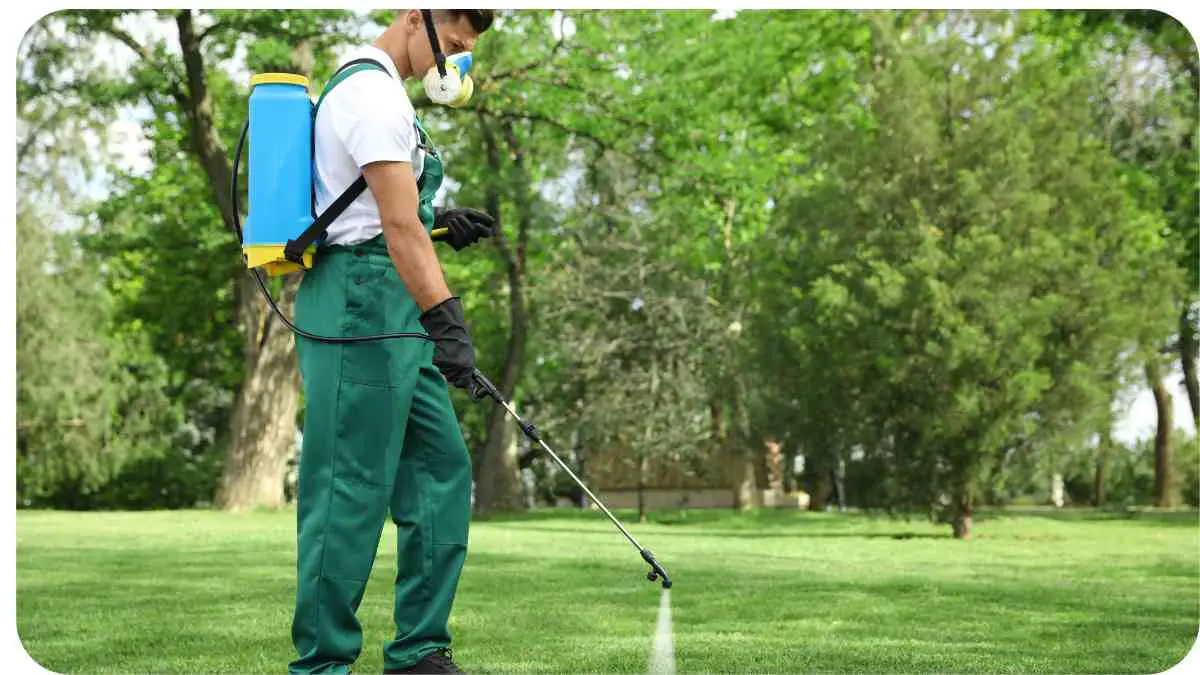Have you ever stepped outside to find your lawn teeming with creepy-crawlies and wondered, “What are all these bugs in my grass?” You’re not alone. A healthy lawn is often a bustling ecosystem of insects, but when certain bugs become too numerous, they can turn from harmless to harmful. In this article, we’ll dive into the world of grass bugs, identify common pests, and explore how to manage and prevent infestations effectively.
| Key Takeaway |
|---|
| Identifying and managing grass bugs early is crucial to maintaining a healthy lawn. |
| Common grass bugs include grubs, chinch bugs, armyworms, sod webworms, and thrips. |
| Regular inspections and proper lawn care practices can help prevent and manage infestations. |
| Both chemical and organic treatment options are available, each with its own benefits and considerations. |
| Introducing natural predators and using DIY remedies can provide effective, eco-friendly solutions. |
| Professional pest control services may be necessary for severe or persistent infestations. |
Common Types of Grass Bugs

Grubs
Grubs are the larvae of beetles and are notorious for damaging lawns. These little white, C-shaped bugs live underground and feed on grass roots, causing patches of dead grass.
If you’re dealing with bugs in your grass, it’s crucial to address pest issues effectively. Discover how organic pest control can help you manage unwanted insects naturally and sustainably, improving your lawn’s health.
| Characteristic | Description |
|---|---|
| Appearance | White, C-shaped larvae |
| Size | 0.5 to 1 inch long |
| Damage | Dead patches of grass, sparse lawn |
Chinch Bugs
Chinch bugs are tiny, black insects with white wings that can cause significant damage to grass. They suck the sap from grass blades, leading to discoloration and death.
| Characteristic | Description |
|---|---|
| Appearance | Small, black with white wings |
| Size | 1/6 inch long |
| Damage | Yellowing and wilting of grass |
Armyworms
Armyworms are caterpillars that move in large numbers and feast on grass. They can quickly strip a lawn bare if not controlled.
| Characteristic | Description |
|---|---|
| Appearance | Green to brown caterpillars |
| Size | Up to 1.5 inches long |
| Damage | Scorched appearance, bare patches |
Sod Webworms
Sod webworms are small larvae that create silk tunnels in the thatch layer of your lawn. They feed on the grass, causing thinning and brown patches.
| Characteristic | Description |
|---|---|
| Appearance | Tiny, greenish larvae in webbed tunnels |
| Size | Up to 1 inch long |
| Damage | Thinning grass, brown patches |
Thrips
Thrips are tiny, slender insects that feed on the sap of grass blades. They can cause discoloration and distortions in the grass.
Understanding the role of different bugs in your grass is essential. Learn more about how to invite beneficial insects to your garden to promote a balanced ecosystem and support plant health.
| Characteristic | Description |
|---|---|
| Appearance | Tiny, slender insects |
| Size | Less than 1/16 inch long |
| Damage | Discoloration and distorted grass blades |
Identifying Grass Bugs

Visual Signs
Recognizing grass bugs often involves looking for visual clues. Dead or discolored patches, unusual insect activity, and small holes in the lawn can indicate the presence of pests.
| Sign | Description |
|---|---|
| Dead Patches | Areas of dead grass often point to insect activity below |
| Insect Activity | Large numbers of insects on or near the grass |
| Holes | Small holes or tunnels in the soil or thatch |
Damage Patterns
Different grass bugs cause different types of damage. Grubs often create irregular patches of dead grass, while chinch bugs typically cause a more uniform yellowing. Understanding these patterns helps in identifying the specific pest.
| Pest | Damage Pattern |
|---|---|
| Grubs | Irregular patches of dead grass |
| Chinch Bugs | Uniform yellowing and wilting |
| Armyworms | Large, bare patches of grass |
| Sod Webworms | Thinning and brown patches |
| Thrips | Discoloration and distorted blades |
How to Prevent Grass Bugs
Maintaining Healthy Grass
A healthy lawn is less susceptible to pests. Regular mowing, proper fertilization, and adequate watering help keep your grass strong and resilient.
Managing pests is vital for a healthy lawn. Explore practical strategies to get rid of pests effectively, ensuring your grass remains vibrant and free from harmful invaders.
| Practice | Benefit |
|---|---|
| Mowing | Keeps grass at an optimal height, discouraging pests |
| Fertilization | Provides essential nutrients for robust growth |
| Watering | Ensures grass stays hydrated and less attractive to pests |
Regular Inspection
Checking your lawn regularly helps catch pest problems early. Look for signs of damage and monitor for unusual insect activity.
| Inspection Tip | Description |
|---|---|
| Frequent Checks | Regularly inspect for signs of pests and damage |
| Early Detection | Catch problems before they become severe |
Proper Watering Techniques
Watering deeply and less frequently encourages deep root growth, making grass more resistant to pests and drought.
| Technique | Description |
|---|---|
| Deep Watering | Encourages deep root growth |
| Less Frequent | Reduces shallow root growth and pest attraction |
Treatment Options for Grass Bugs
Chemical Treatments
When dealing with severe infestations, chemical treatments might be necessary. These products are designed to target specific pests and can provide quick relief.
| Chemical | Target Pest | Application |
|---|---|---|
| Imidacloprid | Grubs, chinch bugs | Apply to soil or grass |
| Carbaryl | Armyworms, sod webworms | Apply to infested areas |
| Bifenthrin | Chinch bugs, sod webworms | Treat grass and surrounding soil |
Note: Always follow the instructions on the label to avoid harming beneficial insects and to ensure safety.
Organic Solutions
Organic treatments are a safer alternative that can be effective in managing grass bugs. They often use natural ingredients and methods to control pests.
If bugs are causing trouble, they might be affecting your lawn’s health. Learn how to fix burnt grass caused by excessive fertilizer, which can also be a symptom of underlying pest problems.
| Organic Solution | Target Pest | Application |
|---|---|---|
| Neem Oil | Various pests | Spray directly on grass |
| Diatomaceous Earth | Grubs, sod webworms | Sprinkle on affected areas |
| Insecticidal Soap | Thrips, chinch bugs | Apply to infested areas |
Pro Tip: Organic solutions are typically slower to act but are safer for pets, children, and beneficial insects.
Natural Predators
Introducing natural predators to your lawn can help keep pest populations in check. These beneficial insects feed on grass bugs and can provide long-term control.
| Predator | Target Pest | Benefit |
|---|---|---|
| Ladybugs | Aphids, thrips | Consume large numbers of pests |
| Nematodes | Grubs, sod webworms | Parasitize and kill pests in the soil |
| Lacewings | Various pests | Feed on a wide range of insects |
Tip: Purchase predators from reputable suppliers and release them in the evening to reduce predation by birds.
DIY Remedies for Grass Bug Infestations

Homemade Sprays
Creating homemade sprays is a cost-effective way to manage minor infestations. These mixtures can deter pests and promote a healthy lawn.
| Recipe | Ingredients | Usage |
|---|---|---|
| Garlic Spray | Garlic cloves, water | Spray on affected areas |
| Soap Spray | Dish soap, water | Apply to grass blades |
| Pepper Spray | Hot peppers, water | Deter a variety of pests |
How-to: Blend ingredients, strain, and apply using a spray bottle.
Beneficial Nematodes
Beneficial nematodes are microscopic worms that target soil-dwelling pests like grubs. They are a powerful, natural solution for managing infestations.
| Nematode Type | Target Pest | Application |
|---|---|---|
| Heterorhabditis bacteriophora | Grubs, soil pests | Mix with water and apply to soil |
| Steinernema carpocapsae | Armyworms, sod webworms | Apply to moist soil |
Tip: Apply nematodes in the early morning or late afternoon when temperatures are cooler for best results.
When to Seek Professional Help
If your lawn is severely damaged or if DIY and organic methods aren’t working, it might be time to consult a professional. Pest control experts can provide targeted treatments and offer advice on long-term lawn care.
Proper lawn care involves more than just pest control. Understand the importance of liquid fertilizer application and how it can influence the health of your grass, including managing pest issues effectively.
Signs It’s Time for Professional Help
| Sign | Reason to Seek Help |
|---|---|
| Extensive Damage | Large areas of dead or severely damaged grass |
| Persistent Infestation | Pests remain despite treatments |
| Uncertain Diagnosis | Difficulty identifying or dealing with pests |
Advice: Choose a reputable pest control service with experience in lawn care.
Conclusion
Maintaining a lush, green lawn involves more than just regular mowing and watering. Understanding the types of bugs that can invade your grass, identifying them accurately, and implementing the right treatment methods are key to keeping your lawn healthy. By taking preventive measures and addressing issues promptly, you can enjoy a beautiful, bug-free lawn all season long.
FAQs
1. How can I tell if I have grubs in my lawn? Look for irregular patches of dead grass and pull up a section to see if there are white, C-shaped larvae present.
2. What’s the best way to treat chinch bugs organically? Neem oil or insecticidal soap can be effective against chinch bugs when applied directly to the grass.
3. Can beneficial nematodes help with all types of lawn pests? Beneficial nematodes are effective against soil-dwelling pests like grubs and some worms but may not target surface-feeding insects.
4. How often should I inspect my lawn for pests? Regular inspections every couple of weeks during the growing season are recommended to catch problems early.
5. When should I seek professional help for lawn pests? If you notice extensive damage, persistent infestations, or are unsure about the type of pests, consulting a professional is a good option.
Further Reading
Lawn Pests: What They Are and How to Manage Them
This article provides an overview of common lawn pests and offers safe, eco-friendly management options to keep your grass healthy and bug-free.
How to Detect and Treat Common Lawn Pests
Learn how to identify common lawn pests and explore effective treatment strategies to address infestations and maintain a beautiful lawn.
Watch Out for These 3 Common Lawn Pests
This guide highlights three prevalent lawn pests and provides tips for detection, prevention, and treatment to protect your grass from damage.
FAQs
What are some common signs of lawn pests?
Common signs include dead patches of grass, yellowing or wilting grass, and visible insects or insect damage on the lawn. Look for irregularities and unusual insect activity.
How can I prevent grass bugs from infesting my lawn?
Maintaining healthy grass through proper mowing, watering, and fertilization can help prevent infestations. Regular inspections and addressing problems early also play a crucial role.
What are some natural ways to control lawn pests?
Natural control methods include using organic sprays like neem oil, introducing beneficial nematodes, and promoting natural predators such as ladybugs and lacewings.
When is it necessary to use chemical treatments for grass bugs?
Chemical treatments may be necessary when dealing with severe infestations that cannot be controlled with natural methods. Always follow application guidelines to ensure safety and effectiveness.
How do I know if I need professional pest control services?
Consider professional help if you experience extensive lawn damage, persistent pest problems despite treatments, or if you have difficulty identifying the specific pests affecting your lawn.

For 15 years, Hellen James has worked in the gardening industry as an expert and landscape designer. During her career, she has worked for a variety of businesses that specialize in landscaping and gardening from small firms to large corporations.

